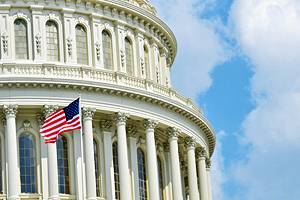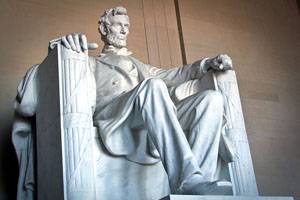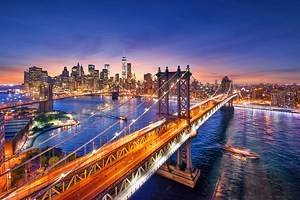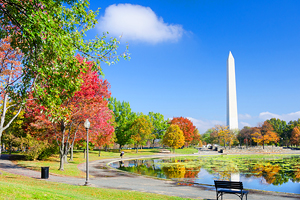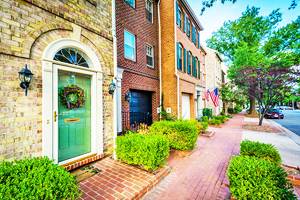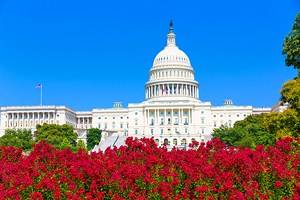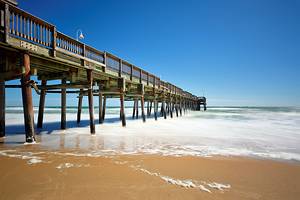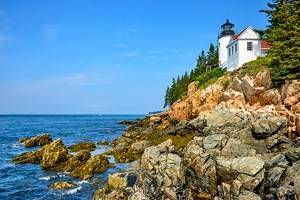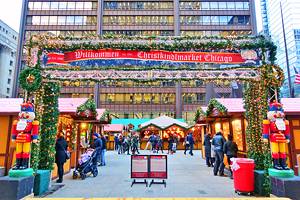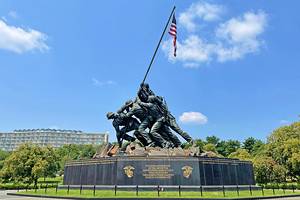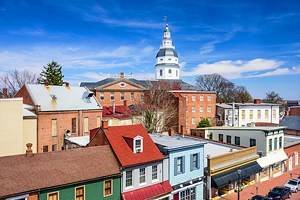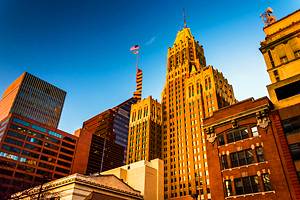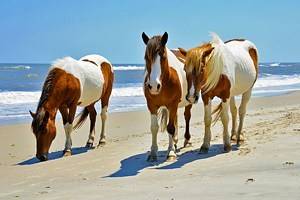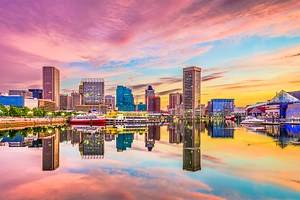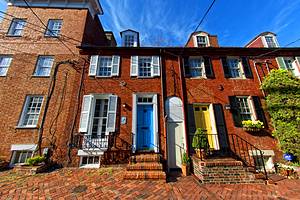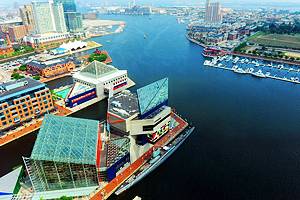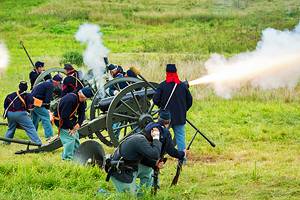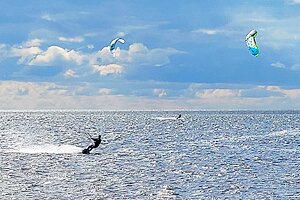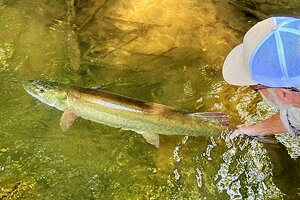11 Top-Rated Day Trips from Washington, D.C.
The area around Washington, D.C. is steeped in history and packed with interesting tourist attractions. The colonial towns of Williamsburg and Annapolis tell the story of the nation's birth, while the Gettysburg Battlefield reveals where America faced a turning point in the Civil War.
The historic town of Harpers Ferry highlights another piece of the Civil War story. The homes of two early presidents are easy to reach from the capital: Mount Vernon, George Washington's elegant manor home, and Monticello, the Neoclassical architectural masterpiece of Thomas Jefferson.
Tourists can also delve into the region's maritime heritage. Besides the Annapolis seaport, St. Michaels is another important coastal town on the Chesapeake Bay. The quaint Old Town of Alexandria also has an atmospheric harbor district on the Potomac River, and Solomons Island is a picturesque waterfront community along the Patuxent River.
Rivaling the coastline for beauty, the countryside outside Washington D.C. beckons with its idyllic wooded landscapes. Day-trippers can escape to nature at the Shenandoah National Park in Maryland's Blue Ridge Mountains. Endless cultural attractions and outdoor adventures await here.
Learn about the best places to visit with our list of the top day trips from Washington D.C.
- 1. Mount Vernon: President George Washington's Home
- 2. Colonial Williamsburg
- 3. Monticello: Thomas Jefferson's Neoclassical Mansion
- 4. Gettysburg National Military Park
- 5. The Historic Seaport of Annapolis
- 6. Baltimore's Museums
- 7. Alexandria: The Old Town and Waterfront
- 8. St. Michaels
- 9. Harpers Ferry National Historical Park
- 10. Shenandoah National Park
- 11. Solomons Island: A Peaceful Riverfront Community
- Map of Day Trips from Washington, D.C.
1. Mount Vernon: President George Washington's Home
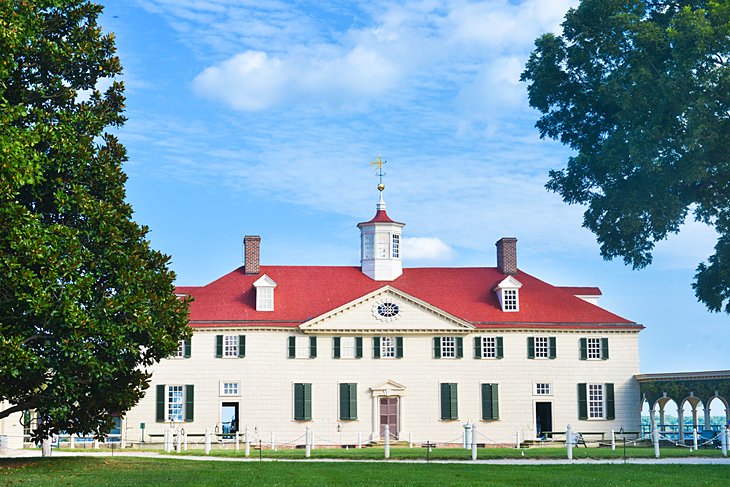
This genteel estate overlooking the Potomac River in Virginia is one of the most iconic houses in America. The historic mansion was George Washington's beloved home, originally built as a small farmhouse in 1734 by his father.
George Washington later enlarged and enhanced Mount Vernon, and over a period of 45 years renovated the building to create a magnificent 21-room manor house. The 11,028-square-foot mansion is ten times larger than the average colonial house in Virginia. The cupola, completed in 1774, features a weathervane topped with a dove to symbolize peace.
Visitors enter through the Central Passage, a spacious room with splendid views of the Potomac. This central hallway displays the Key to the Bastille, which the Marquis de Lafayette of France gave to George Washington in 1790 after the storming of the prison in Paris.
The grandest room of Mount Vernon was the last to be created, the green-wallpapered New Room, which was used as a salon to welcome guests and occasionally as a dining room on special occasions. With its walls coated in vivid "verdigris green" paint, the Dining Room is one of the most striking rooms in the house.
Adorned with Neoclassical architectural elements and Prussian blue fabrics, the Front Parlor was where the household enjoyed tea and coffee and played games. The Little Parlor is the music room and contains the harpsichord that Washington bought in 1793 for his step-granddaughter, Nelly Custis.
Surrounding the mansion are spectacular 18th-century English-style gardens landscaped with pathways; lawns; a formal garden; a botanical garden; and minimally manicured woodland areas, where native shrubs and wildflowers blossom. The outdoor property also has a 3,000-acre farm, with a barn and a kitchen garden planted with fruit trees and vegetables.
Visitors may dine at the Mount Vernon Inn Restaurant located on the estate grounds (admission to Mount Vernon is not required). This inviting restaurant offers authentic 18th-century ambience and serves some early American specialties, such as peanut soup and sirloin steak.
Address: 3200 Mount Vernon Memorial Highway, Mount Vernon, Virginia
Official site: http://www.mountvernon.org
2. Colonial Williamsburg
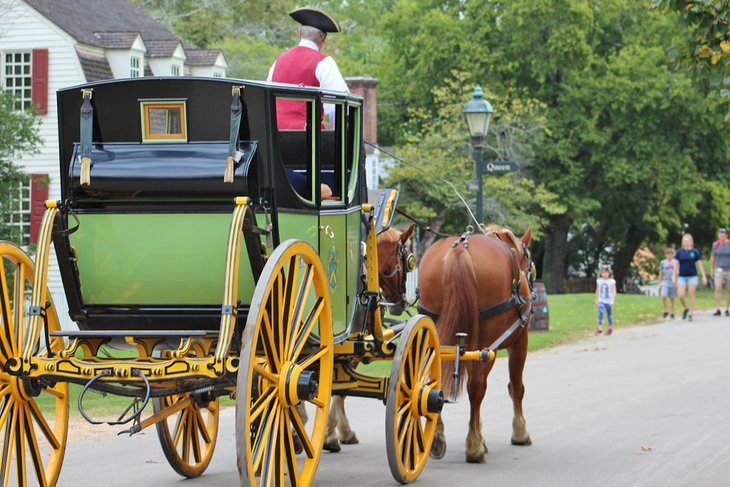
About two hours south of Washington, D.C., colonial Williamsburg is a picture-perfect historic town that transports visitors to the late 18th century. The town was the capitol of the colony of Virginia and played a key role in the American Revolution from 1776 to 1781, and it was from here that George Washington journeyed on horseback to the Battlefield of Yorktown.
With most of the town's buildings dating back to the colonial period, Williamsburg has the feel of an open-air museum. In fact, the entire town is designated as a Historic Area. Horse-drawn carriages and historical reenactments (street performances) with characters in period costumes also give visitors the impression of being in a time warp.
Many of the 18th-century homes are open to the public, such as the George Wythe House and the Everard House, and are still decorated in the style of the colonial-era residents.
Visitors get a sense of everyday life during the colonial era at the DeWitt Wallace Decorative Arts Museum, which displays early American furniture and ceramics; and the Abby Aldrich Rockefeller Folk Art Museum, which showcases paintings, needlework, and toys.
To learn more about the nation's political heritage in this Revolutionary City, visit the Governor's Palace, a meticulous reproduction of the 18th-century building that was the residence of the Virginia colony's royal governors before the Revolution. Designed to express the grandeur and authority of the British crown, this elegant royal palace features handsome wood-paneled interiors, a spacious ballroom, and exquisite gardens. Guided tours are available.
Another important landmark of the Virginia colony is the Capitol, which was constructed between 1751 and 1753 after a fire burned an earlier capitol building. At this stately colonial monument, legislators met to debate legislation, and courts convened to administer justice. Guided tours are available.
Other must-see sights are Anderson Blacksmith Shop (310 East Duke of Gloucester Street), which created armory for use during the Revolutionary War; and R. Charlton's Coffeehouse (East Duke of Gloucester Street), where tourists can take a guided tour and sample coffee, tea, or hot chocolate prepared exactly how it was during the 18th century. Costumed guides explain the history of the coffeehouse and its importance in colonial society. A choice of beverage is offered at the end of the tour.
In the heart of historic Williamsburg (416 East Duke of Gloucester Street), The King's Arms tavern offers authentic colonial-era cuisine and ambience. Guests have the impression that they've traveled back in time. The dining room is a reproduction of the original tavern that opened in 1772, and the kitchen prepares traditional colonial-era dishes including savory cheesecake, fowl and beef stew, beef with corn succotash, and game meat pot pie.
Another traditional restaurant, Chowning's Tavern (109 East Duke of Gloucester Street) delivers the cozy, convivial atmosphere of an 18th-century pub. This charming restaurant serves food typical of colonial-era taverns, such as shepherd's pie, beef brisket, and cider cake.
Take a walk further down East Duke of Gloucester Street to reach an award-winning restaurant, the Fat Canary. Despite its historic setting in the center of colonial Williamsburg, this restaurant specializes in modern cuisine. Guests enjoy a seasonal menu of innovative dishes such as tuna tempura, grilled Atlantic salmon, and short ribs with shiitake mushrooms.
3. Monticello: Thomas Jefferson's Neoclassical Mansion
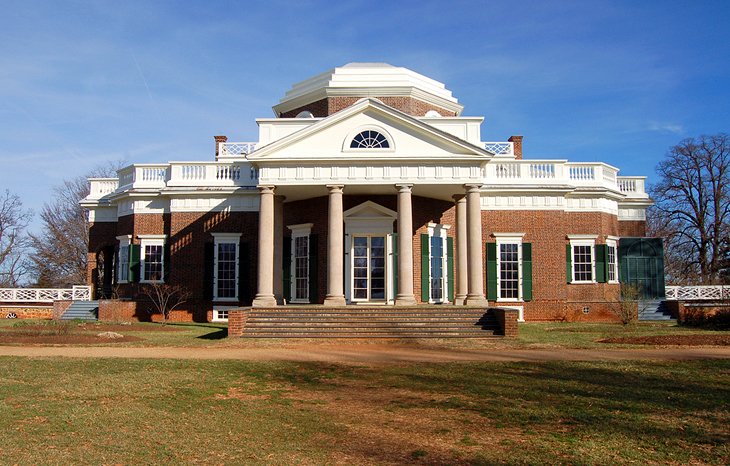
In the lovely Virginia countryside, Monticello is a Neoclassical architectural masterpiece constructed between 1769 and 1784 for Thomas Jefferson. The 11,000-square-foot house features 43 rooms, including the private quarters that were used by Jefferson's family and the grand reception rooms, such as the Parlor, where social gatherings and dances took place.
The most iconic room in Monticello is the majestic Dome Room, with an inspiring domed ceiling, circular windows, and an oculus skylight reminiscent of the Pantheon in Rome.
The entire building is surrounded by gardens, orchards, farmland, and an 18-acre ornamental forest. The floral gardens include oval flower beds that feature specific varieties (such as tulips, roses, and poppies) and a winding walkway, inspired by romantic English gardens, bordered with an abundance of lush, colorful blossoms.
Visitors may choose from several different guided tour options: a tour of the house and gardens, a "behind-the-scenes" tour of the family quarters and the servants area, or an "after-hours" tour in the early evening after the regular closing time.
Address: 931 Thomas Jefferson Parkway, Charlottesville, Virginia
Official site: https://www.monticello.org/
4. Gettysburg National Military Park
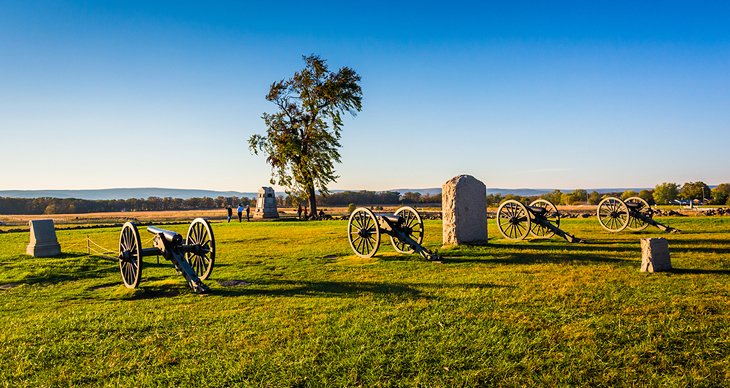
A pivotal scene of American history took place on the fields of what is now Gettysburg National Military Park in Pennsylvania, about 82 miles (a 90-minute drive) from Washington, D.C. The three-day Battle of Gettysburg, fought on July 1st - 3rd in 1863, was the most decisive moment in the Civil War, with heavy casualties that set back the Confederate side and changed the course of the war in favor of the North.
It's best to begin a visit at the Gettysburg National Military Park Museum and then explore the monuments and memorials on the 6,000-acre battlefield. The museum provides historical background on how the war started and details of events of the three-day battle, as well as explaining the results of the war. Exhibits present thematic topics such as "Causes of War from 1776 to 1861" and "Aftermath of the Battle."
A highlight of the museum is the Battle of Gettysburg Cyclorama painted in the late 1880s by the French artist Paul Philippoteaux.
The Museum & Visitor Center at the Gettysburg National Military Park has a bookshop and a café. The Museum & Visitor Center is also the starting point for guided tours of the battlefields. Guided tour options include a Battlefield Car Tour and a Battlefield Bus Tour, both led by licensed battlefield guides. The private company, GettysBike Tours, offers bicycle tours led by Licensed Battlefield Guides.
Other must-see tourist attractions in Gettysburg are the Gettysburg National Cemetery, where Abraham Lincoln delivered the Gettysburg Address on November 19, 1863, and the David Wills House in the historic downtown Gettysburg, where Lincoln spent the night before delivering the Gettysburg Address. Free shuttles are available from the museum and visitor center to the David Wills House.
An easy way to visit Gettysburg is on a guided excursion to Gettysburg National Military Park. The tour might include a stop at the restored home (dating to 1860) of George Washington Shriver. On display are Civil War bullets that were discovered in the home, giving visitors a sense of the Shriver family's wartime experience.
Address: Gettysburg National Military Park Museum & Visitor Center, 1195 Baltimore Pike, Gettysburg, Pennsylvania
Official site: www.gettysburgfoundation.org
5. The Historic Seaport of Annapolis
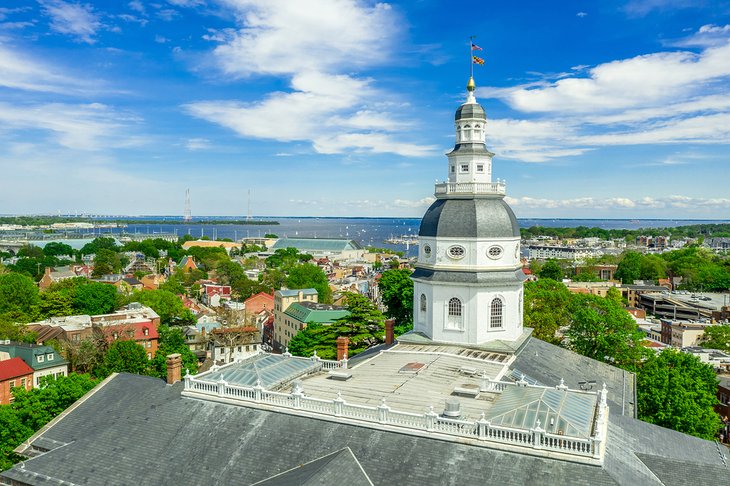
The capital city of Maryland, Annapolis is a lovely seaport with four centuries of history. With its old brick streets and 18th-century colonial homes, the town is a living open-air museum.
Annapolis was America's first peacetime capital, and four of the nation's Founding Fathers had residences here. The most noteworthy residence is the William Paca House (listed as a National Historic Landmark). This colonial Georgian mansion features a beautiful two-acre garden landscaped in English style. The house was built in the 1760s for William Paca, one of the signers of the Declaration of Independence. Visitors may take a guided tour to see the interior of the William Paca House; the garden is open to the public for self-guided strolls.
The Hammond-Harwood House, a registered National Historic Landmark, was built in 1774 as a residence for legislator Matthias Hammond. With its symmetrical lines, the building exemplifies colonial Georgian architecture. The facade, modeled after Andrea Palladio's Villa Pisani in Italy, inspired the design of Monticello. The Hammond-Harwood House is open to the public for guided tours. The interior displays colonial-era antiques and paintings by Charles Willson Peale, the renowned 18th-century painter who created portraits of George Washington.
The Museum of Historic Annapolis tells the story of the city through its presentation of artifacts dating from 1728 to 1864. To learn more about the town's African-American heritage, visit the Banneker-Douglass Museum, which displays interesting exhibits and offers lectures as well as other educational programs.
About 31 miles from Washington, D.C. on the Severn River, Annapolis is, at heart, a maritime town. Visitors can discover the town's 18th-century seafaring history at the Annapolis Maritime Museum & Park.
Today, Annapolis is a popular destination for recreational boating such as kayaking, canoeing, and sailing. Or leave the navigation to someone more experienced by taking a boat tour or sailing cruise around the Annapolis Harbor and out onto the Chesapeake Bay.
Annapolis is also home to the U.S. Naval Academy and has a Naval Academy Museum that is open to the public.
6. Baltimore's Museums
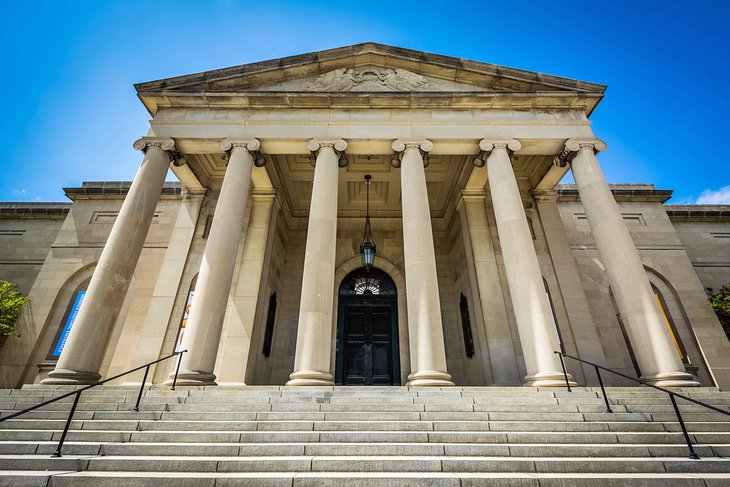
Baltimore is an easy day trip from Washington D.C., thanks to frequent direct train and bus service. Top-notch cultural attractions including three outstanding art museums make this city a worthwhile place to visit for those who appreciate art and culture.
The Walters Art Museum could take a day on its own, covering the history of art from the third millennium BC to the early 20th century. Highlights are the extensive Egyptian, Greek, Roman, Byzantine, Ethiopian, and western medieval art collections, but the exhibits of ivories, enamels, bronzes, jewelry, and illuminated manuscripts are equally outstanding.
The Baltimore Museum of Art excels in its collection of modern art movements, from the Impressionists forward, and has the world's largest collection of works by Henri Matisse.
For fun, and a new perspective on art and artists, don't miss seeing the quirky and unexpected exhibits of naïve art and works of self-taught artists at the American Visionary Art Museum. Located on Baltimore's Inner Harbor, the building itself is a work of art, faced in colorful mosaics, its courtyard alive with three-dimensional art.
7. Alexandria: The Old Town and Waterfront
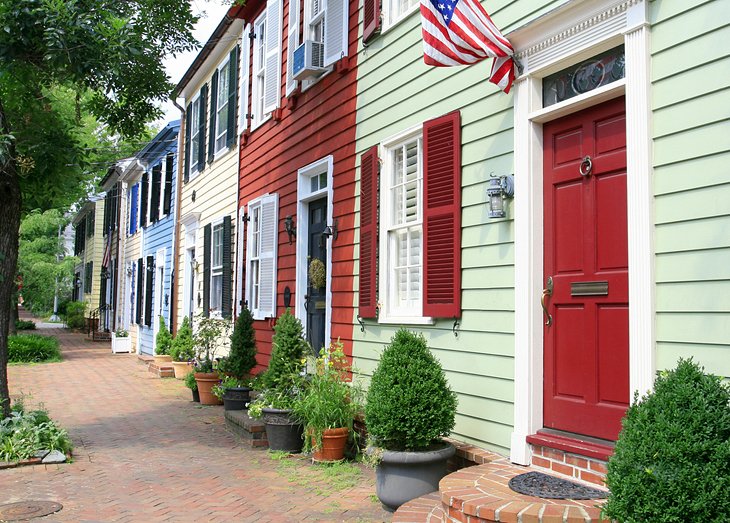
Alexandria offers an alluring combination of old-world charm and a lively ambience. This pleasant waterfront city lies just eight miles from Washington, D.C. along the banks of the Potomac River.
The city has a designated historic district, which has been well preserved and is a delight to wander around. In the Old Town, visitors can stroll the cobblestone streets and red-brick sidewalks, stopping to admire the quaint buildings dating to the 18th and 19th centuries and browse the locally owned boutiques. Shoppers will find everything from artisan jewelry and designer fashion to home decor. The Old Town also has a great selection of restaurants.
Along the Potomac River waterfront are more restaurants, many specializing in seafood. At the harbor, tourists can also take a boat tour to see Alexandria's historic riverfront and yacht marina.
Other things to do in Alexandria include visiting the three museums at Market Square: Gadsby's Tavern Museum; the Carlyle House; and Stabler-Leadbeater Apothecary Museum, housed in splendid 18th-century buildings.
8. St. Michaels
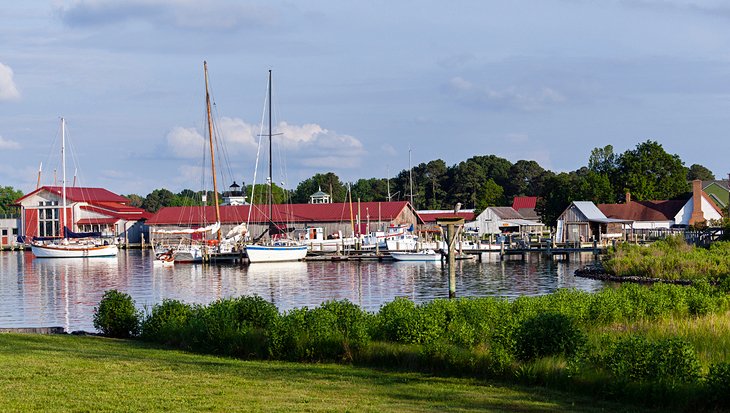
Steeped in history dating back to the mid-1600s, St. Michaels is a peaceful coastal town in Maryland that was once a trading post for tobacco farmers and fur trappers. The town helped to defend against the British in the War of 1812 and later became an important center of shipbuilding and fishing.
Tourists will enjoy visiting the town's historic churches, colonial houses, and old Victorian homes. To learn more about the town's maritime heritage, visit the Chesapeake Bay Maritime Museum along the waterfront.
St. Michaels also has a noteworthy 19th-century lighthouse, as well as a picturesque harbor with yacht marinas.
From the harbor, tourists can rent sailboats, canoes, and kayaks. Several companies also offer chartered boat tours and fishing trips that depart from the harbor and sail out onto the Chesapeake Bay.
9. Harpers Ferry National Historical Park
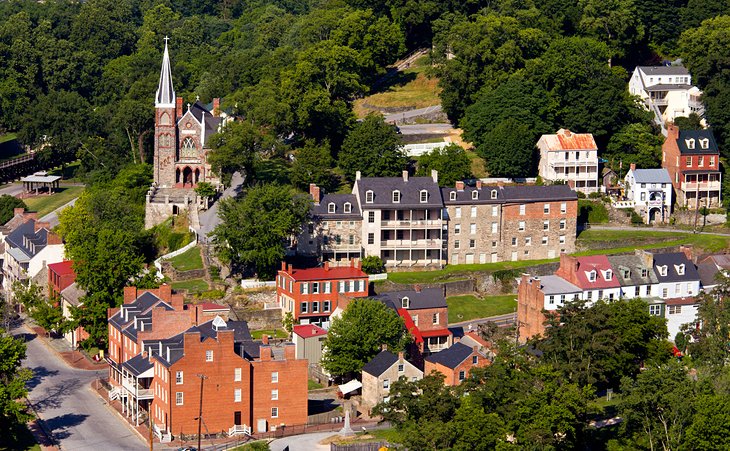
Nestled in the rolling hills of Maryland's Blue Ridge Mountains along the Potomac and Shenandoah rivers, the town and surroundings of Harpers Ferry are designated as a National Historic Park.
It's worth taking the one-hour-and-15-minute drive (67 miles) from Washington, D.C. to visit this idyllic place. With quaint old buildings clustered around a steepled church, Harpers Ferry looks like the image of a painting.
Despite its storybook appearance, the small community made significant contributions throughout American history, including an important battle during the Civil War, John Brown's protests against slavery, and the education of former slaves.
Tourists can step back in time by strolling the town's atmospheric old streets and participating in a historic trade workshop such as tinware making or baking of the 19th century. Shenandoah Street is lined with museums and interactive historical exhibits.
The Harpers Ferry Historical Society hosts special events such as the 1865 West Virginia Ladies Ice Cream Festival in July.
Visitors can also explore the natural surroundings outside of town. The Jefferson Rock Trail is an uphill hike, with sensational views from the top, as well as an excellent place for birdwatching.
Other things to do in Harpers Ferry National Historical Park include rock climbing, fishing, and picnicking.
10. Shenandoah National Park
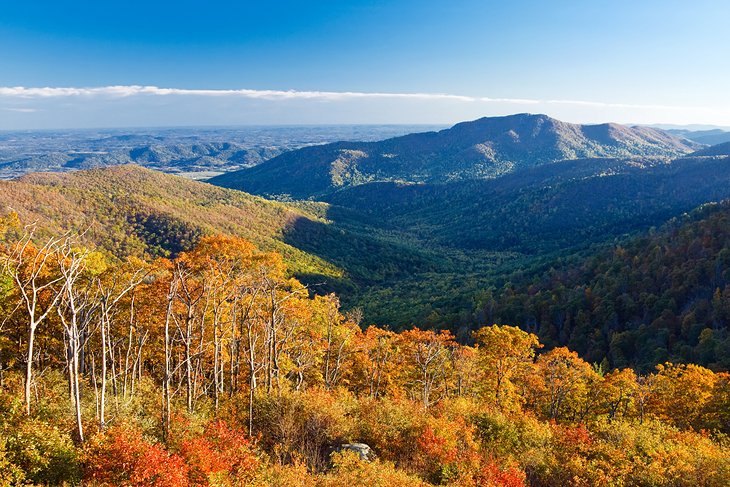
At Shenandoah National Park, visitors can escape to a pristine natural environment just 75 miles from Washington, D.C. The park is a wonderful place to visit for relaxation and recreation. Encompassing 200,000 acres of protected lands in the Blue Ridge Mountains, Shenandoah National Park delights visitors with its rushing waters, tranquil woodlands, and gorgeous views.
The only public road through the park is Skyline Drive, which stretches for 105 miles along the crests of the Blue Ridge Mountains. Visitors can take a scenic drive along this route, or simply use the road to access the park's hiking trails, such as the famous Appalachian Trail. Hikers will enjoy the park's unspoiled environment, which is home to many songbirds and deer.
For those who decide that a day trip is not enough and want to stay the night, the Big Meadows Lodge and the Skyland lodge offer comfortable accommodations. The Lewis Mountain Cabins or the Potomac Appalachian Trail Club cabins provide a more rustic overnight experience. The park also allows camping, and campsites may be reserved in advance.
11. Solomons Island: A Peaceful Riverfront Community
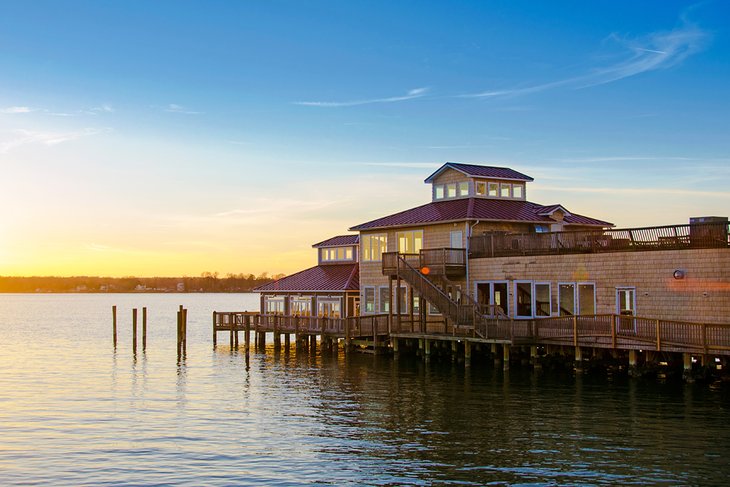
Although not technically an island, this tranquil waterfront community is a mecca for recreational boating. Solomons Island in Maryland is about a one-and-a-half-hour drive (63 miles) from Washington, D.C. at the mouth of the Patuxent River, accessible by the Governor Thomas Johnson Bridge.
The town has a Riverfront Boardwalk with a relaxing village ambience. Tourists can enjoy a leisurely meal at one of the restaurants with riverside views. The local specialty is fresh seafood.
To discover the area by boat tour, hop aboard the historic Wm. B. Tennison sailboat, which was constructed in 1899. The river cruise takes passengers on a one-hour sightseeing tour around Solomons Harbor and the Patuxent River.
Other top tourist attractions include the Calvert Marine Museum and the Annmarie Garden Sculpture Garden & Arts Center, which features art galleries as well as outdoor sculpture exhibits and children's activities.


